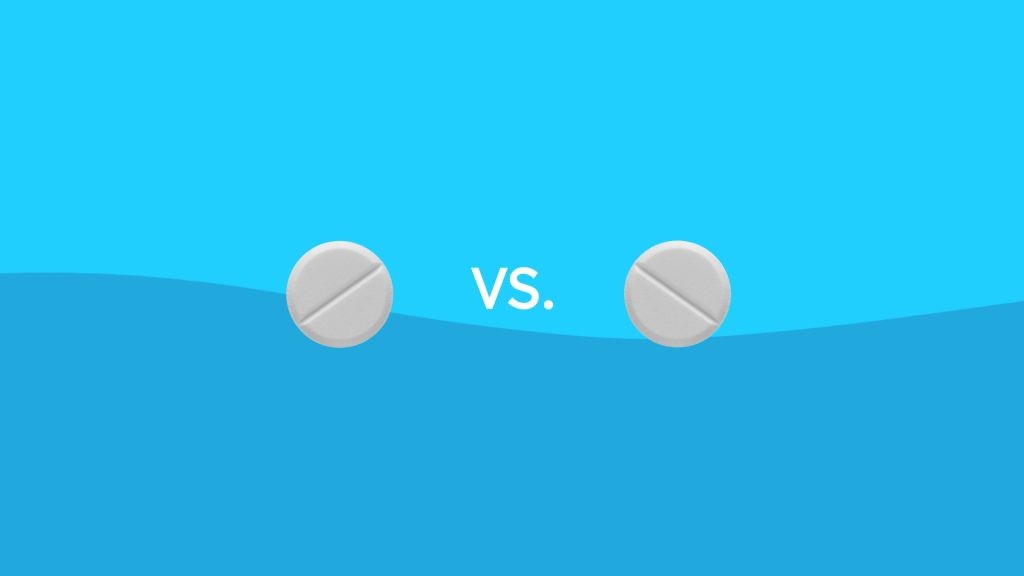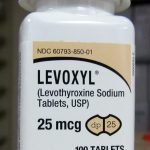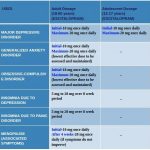
Contents
Lexapro vs. Paxil
Lexapro (escitalopram) and Paxil (paroxetine) are selective serotonin reuptake inhibitors (SSRIs) used to treat depression and generalized anxiety disorder. Other SSRIs include citalopram (Celexa), fluoxetine (Prozac), and sertraline (Zoloft). SSRIs affect neurotransmitters in the brain, the chemical messengers that nerves use to communicate. An imbalance of neurotransmitters is believed to cause depression. Lexapro and Paxil prevent the reuptake of serotonin, resulting in more serotonin in the brain to attach to receptors. Reuptake removes released neurotransmitters and terminates their actions, so the reduced uptake caused by Lexapro and Paxil increases free serotonin that stimulates nerve cells.
Side Effects of Lexapro and Paxil
Lexapro
Common side effects include:
- agitation or restlessness,
- blurred vision,
- diarrhea,
- difficulty sleeping,
- drowsiness,
- dry mouth,
- fever,
- frequent urination,
- headache,
- indigestion,
- nausea,
- increased or decreased appetite,
- increased sweating,
- sexual difficulties (decreased sexual ability or desire, ejaculatory delay),
- taste alterations, tremor (shaking), and
- weight changes.
Antidepressants increased the risk of suicidal thinking and behavior (suicidality) in short-term studies in children and adolescents with depression and other psychiatric disorders. Anyone considering the use of Lexapro or any other antidepressant in a child or adolescent must balance this risk with the clinical need. Short-term studies did not show an increase in the risk of suicidality with antidepressants compared with placebo in adults beyond 24 years of age. There was a reduction in risk of suicidality with antidepressants compared with placebo in adults 65 years of age and older. Depression and certain other psychiatric disorders are themselves associated with increases in the risk of suicide. Patients who are started on therapy with antidepressants should be closely observed for clinical worsening, suicidality, or unusual changes in behavior.
Other side effects include influenza-like symptoms and pain in neck or shoulders.
Although changes in sexual desire, sexual performance, and sexual satisfaction often occur as a result of depression itself, they may also be a consequence of the drugs used to treat depression. About one in 11 men given Lexapro report difficulties ejaculating.
Possible serious side effects include:
- Serotonin syndrome
- Suicidal thinking and behavior
- Abnormal bleeding
- Seizures
- Manic episodes
- Confusion
- High fever
- Slurred speech
- Muscle rigidity
- Low sodium
- Angle closure glaucoma
WARNING: Side Effects Warning
Some patients experience withdrawal reactions upon stopping SSRI therapy. Symptoms may include
- dizziness,
- tingling,
- tiredness,
- vivid dreams,
- irritability, or
- poor mood.
To avoid these symptoms, the SSRI dose can be slowly reduced instead of abruptly stopped.
Paxil
Common side effects of paroxetine include:
Other important side effects include:
- increased blood pressure
- seizures
- sexual dysfunction
Some patients may experience withdrawal reactions upon stopping paroxetine. Symptoms of withdrawal include:
The dose of paroxetine should be gradually reduced when therapy is discontinued.
Antidepressants increased the risk of suicidal thinking and behavior (suicidality) in short-term studies in children and adolescents with depression and other psychiatric disorders. Anyone considering the use of paroxetine or any other antidepressant in a child or adolescent must balance this risk with the clinical need. Patients who are started on therapy should be closely observed for clinical worsening, suicidality, or unusual changes in behavior.
Dosage for Lexapro vs. Paxil
Lexapro
- The usual starting dose for treating depression in adults or adolescents is 10 mg once daily. The dose may be increased to 20 mg once daily after 3 weeks.
- Benefit may not be seen until treatment has been given for up to 4 weeks. A daily dose of 20 mg may not be more effective than 10 mg daily for treatment of depression.
- The dose for treating generalized anxiety disorder is 10 mg once daily.
- Lexapro can be taken with or without food.
Paxil
- The recommended dose is 20-60 mg daily of immediate release tablets or 12.5-75 mg daily using controlled release tablets. Paroxetine is given as a single daily dose, usually in the morning. The full effect may not occur until after a few weeks of therapy.
- Doses for obsessive-compulsive disorders and panic disorders are often higher than those for depression. Doses are often adjusted to find the optimal dose.
- Elderly patients, debilitated persons, and patients with certain kidney or liver diseases may need lower doses because they metabolize and eliminate paroxetine more slowly, which can lead to higher blood levels and toxicity.
QUESTION
Drugs Interactions with Lexapro and Paxil
Lexapro
- All SSRIs, including Lexapro, should not be combined with drugs in the monoamine oxidase (MAO) inhibitor class of antidepressants such as isocarboxazid (Marplan), phenelzine (Nardil), tranylcypromine (Parnate), selegiline (Eldepryl) and procarbazine (Matulane) or other drugs that inhibit monoamine oxidase such as linezolid (Zyvox) and intravenous methylene blue. Such combinations may lead to confusion, high blood pressure, high fevers, tremor or muscle rigidity, and increased activity. At least 14 days should elapse after discontinuing Lexapro before starting an MAO inhibitor. Conversely, at least 14 days should elapse after discontinuing an MAO inhibitor before starting Lexapro.
- Similar reactions occur when SSRIs are combined with other drugs that increase serotonin in the brain, for example tryptophan, St. John’s wort, meperidine (Demerol), lithium (Lithobid, Eskalith), triptans (for example, sumatriptan [Imitrex, Alsuma]), and tramadol (Ultram)
- Use of selective serotonin inhibitors may increase the risk of gastrointestinal bleeding in patients taking warfarin (Jantoven, Coumadin), aspirin, nonsteroidal anti-inflammatory drugs (NSAIDs), and other drugs that cause bleeding.
Paxil
- All SSRIs, including paroxetine, should not be taken with any of the monoamine oxidase inhibitor (MAOI) class of antidepressants, for example, isocarboxazid (Marplan), phenelzine (Nardil), tranylcypromine (Parnate), selegiline (Eldepryl, Carbex), and procarbazine (Matulane) or other drugs that inhibit monoamine oxidase such as linezolid (Zyvox) and intravenous methylene blue.
- Such combinations may lead to confusion, high blood pressure, tremor, hyperactivity, coma, and death. (A period of 14 days without treatment should lapse when switching between paroxetine and MAOIs.) Similar reactions occur when paroxetine is combined with other drugs for example, tryptophan, St. John’s wort, meperidine (Demerol), tramadol (Ultram) that increase serotonin in the brain.
- Paroxetine may increase the effect of the blood thinner, warfarin (Coumadin), leading to excessive bleeding. Therefore, warfarin therapy should be monitored more frequently in patients who are also taking paroxetine. Combining SSRIs such as paroxetine with aspirin, nonsteroidal anti-inflammatory drugs or other drugs that affect bleeding may increase the likelihood of upper gastrointestinal bleeding. Phenytoin (Dilantin) and phenobarbital may decrease the amount of paroxetine in the body and possibly reduce its effectiveness.
Are Lexapro and Paxil Safe to Take While Pregnant or Breastfeeding?
Lexapro
- The safety of Lexapro during pregnancy and breastfeeding has not been established. Therefore, Lexapro should not be used during pregnancy unless, in the opinion of the physician, the expected benefits to a patient outweigh unknown hazards to the fetus.
- Lexapro is excreted in human milk. Lexapro should not be given to nursing mothers unless, in the opinion of the physician, the expected benefits to the patient outweigh the possible hazards to the child.
Paxil
- Use of paroxetine during pregnancy may result in congenital heart defects. Paroxetine should not be administered to pregnant women unless the need justifies the risk.
- Paroxetine is secreted in breast milk. Mothers taking paroxetine should consider not breastfeeding.
Summary
Lexapro (escitalopram) and Paxil (paroxetine) are selective serotonin reuptake inhibitor (SSRI) antidepressants used to treat depression. Lexapro is also used to treat anxiety disorders. Side effects of Lexapro and Paxil that are similar include nausea, headaches, diarrhea, insomnia, drowsiness, dry mouth, increased sweating, and changes in appetite.


